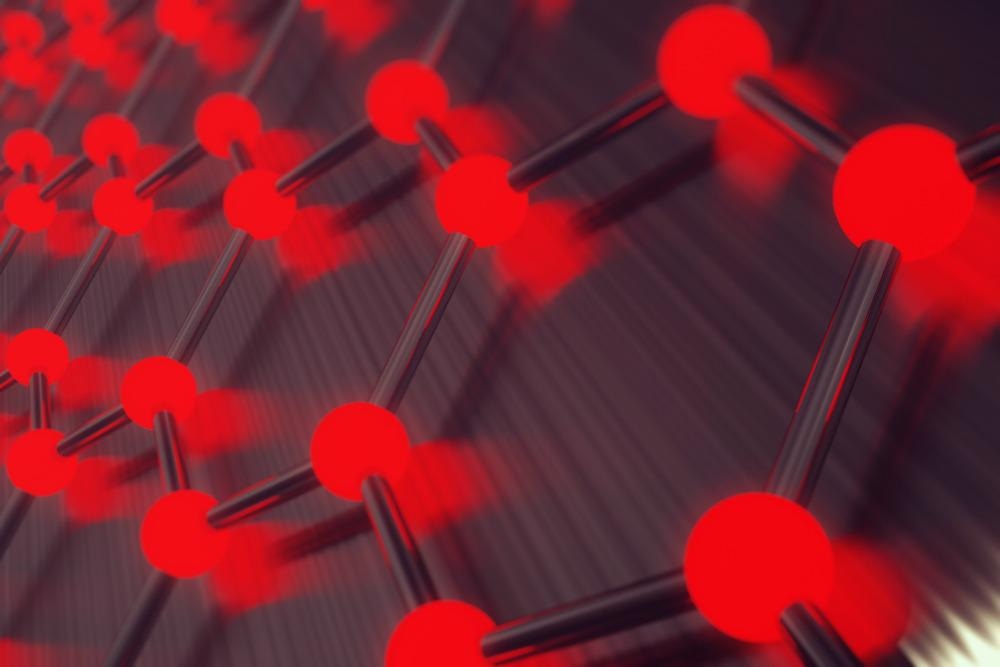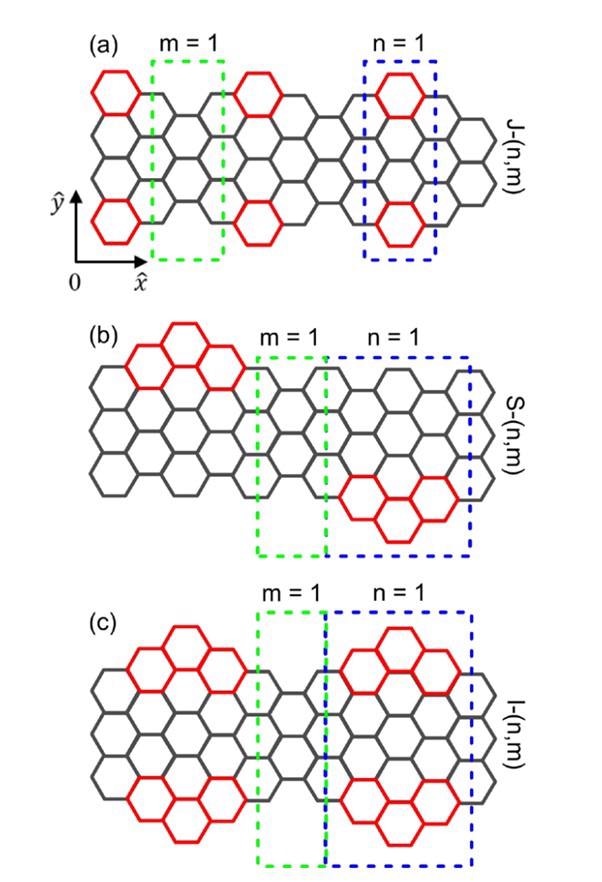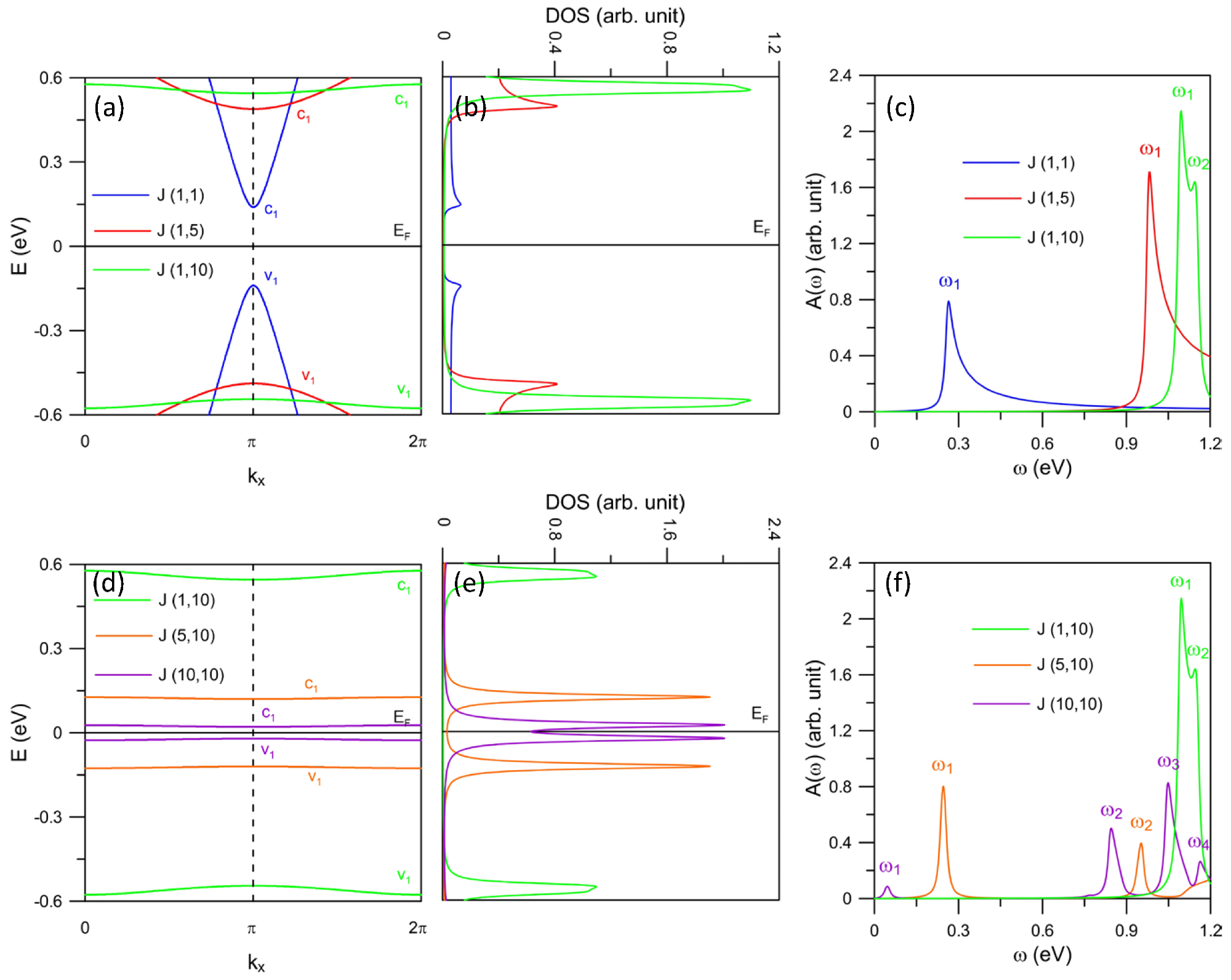The latest research published in the journal Nanomaterials has focused on armchair graphene nanoribbons (AGNRs) visual characteristics via edge-defect manipulation techniques. The alteration of the edge conditions results in a variety of electronic configurations with noticeable variations in the bandgap energy and peculiar flat bands at low intensity.

Study: Role Played by Edge-Defects in the Optical Properties of Armchair Graphene Nanoribbons. Image Credit: Rost9/Shutterstock.com
The optical-absorption spectrum bands include distinct excitation maxima that are substantially dependent on the nature and duration of edge expansion. Surprisingly, there are peculiar transition pathways connected with flat bands for some edge-modified structures.
In this paper, researchers were able to control how the edge-defect affects the electrical and optical characteristics of AGNRs effectively. Theoretical calculations also show an effective technique to modify the optical characteristics of AGNR.
Importance and Utilization of Graphene Nanoribbons (GNRs)
GNRs, or graphene nanoribbons, are thin ribbons of graphene nanomaterials with quasi -D1 characteristics. This substance has many key physical attributes, such as electrical, photonic, electromagnetic, and mobility capabilities.
As a result, they have an advantage over graphene surface sheets in some engineering fields such as nanotechnology electronic applications, semiconducting fields, and photodiode sensing instruments. So far, both the bottom-up and top-down techniques are effective for the manufacture of GNRs.
Edge-State Arrangement in Graphene Nanoribbons Types
GNRs are known to be categorized into two types depending on their edge-state configuration, namely armchair GNR (AGNR) and zigzag GNR (ZGNR). Both AGNR and ZGNR can be susceptible to edge flaws during synthesis, which has been shown to significantly alter the critical physical characteristics of the substance type.

Lattice structures of edge-extended AGNRs for (a) 7/9-AGNR nanoribbon, (b) staggered edge-extended AGNR, and (c) inline edge-extended AGNR. The grey hexagons denote pristine AGNRs while the red hexagons represent the edge-extended areas. The green and blue dashed rectangles indicate the units of n and m segments, respectively. Image Credit: Do, T. N. et al
Graphene Nanoribbons Structures
AGNRs are composed of carbon molecules that are piled together to create a honeycomb framework. To examine the electrical and optical characteristics of AGNR, the tight-binding model (TBM) was employed.
Overall, there are three possible edge-extended AGNR permutations: AGNR heterojunction (J-(n, m)), staggered edge-extended AGNR (S-(n, m)), and inline edge-extended AGNR (I-(n, m)). In this nomenclature, n and m represent the lengths of the native and edge-extended sections, correspondingly.
Edge Defect Modification and Its Disadvantages
It has been established that edge flaws, in addition to edge cutting, ribbon thickness, vacancies, and induced electromagnetic charges, may modify the essential physical features of GNRs.
Edge-defect GNRs with proper capabilities are appropriate for some technological instrumentation usage, including energy bandgap mechatronics for synthesizing semiconductor heterojunction gadgets, enhanced electrical properties for effective gas detecting, and misaligned sublattice for establishing graphene nanoparticles with ferromagnetic fairly significant ground states.
Unregulated edge alterations have a detrimental effect on the potential of employing GNRs in nanomaterials instrumentation by causing transport degradation and unpredictability.
However, unregulated edge alterations have a severe influence on the capability of employing GNRs in nanodevices by causing mobility degradation and unpredictability. Despite recent advances, research into the optical characteristics of edge extended GNRs is still in its early stages. As a result, tailoring the optical spectra of GNRs by adding edge defects merits careful consideration.
In this latest research, the electrochemical and optical properties of AGNRs with various types of edge extensions were analyzed thoroughly. The current study also examines the density of states (DOS), which is critical to understanding the electron energy dispersion and optical stimulation pathways.

(a) Electronic band structure of J-(n,m) AGNRs with n = 1 and various chosen values of m, (b) the corresponding DOS and (c) the absorption spectra. Panels (d–f) illustrate similar plots for m = 10 and various n’s. Image Credit: Do, T. N. et al
Research Findings
The energy band configuration of a pure AGNR has binding energy that is inversely related to the ribbon thickness. Results also indicated that the mirrored symmetric framework of the valence and conduction edge bands is preserved in pure structures.
Compared to previous experimental findings and theoretical calculations, similar data were obtained on the electrical attributes of edge-extended GNRs.
It was also observed that the energy distribution and spectral absorption graphs of edge-extended AGNRs with I-(n, m) configuration are unique. Regardless of the variation in DOS, the low-frequency energy absorption spectral data show equal absorption strengths for the three designs.
Experts determined that while changing m may significantly alter the bandgap's energy distribution, n is the primary factor in tuning the bandgap.
Future Industrial Utilization
Nanoribbons might be used in detection and nano-imaging applications throughout a wide range of wavelengths, from visual to infrared. Furthermore, plasmons have been extensively explored in graphene and other substances, with optical frequency modulation, excitonic electroluminescence transistors, laser, and optical cavity couplings cited as viable technologies.
In conclusion, complete research of the rich electrical and optical characteristics of edge extended AGNRs, as well as an evaluation of their architectures, energy bands, and future industrial prospects, has been explored.
Continue reading: New Research Narrows the Gap for Graphene Nanoribbon Applications.
Reference
Do, T. N. et al., (2021) Role Played by Edge-Defects in the Optical Properties of Armchair Graphene Nanoribbons. Nanomaterials. 11(12). 3229. Available at: https://www.mdpi.com/2079-4991/11/12/3229
Disclaimer: The views expressed here are those of the author expressed in their private capacity and do not necessarily represent the views of AZoM.com Limited T/A AZoNetwork the owner and operator of this website. This disclaimer forms part of the Terms and conditions of use of this website.